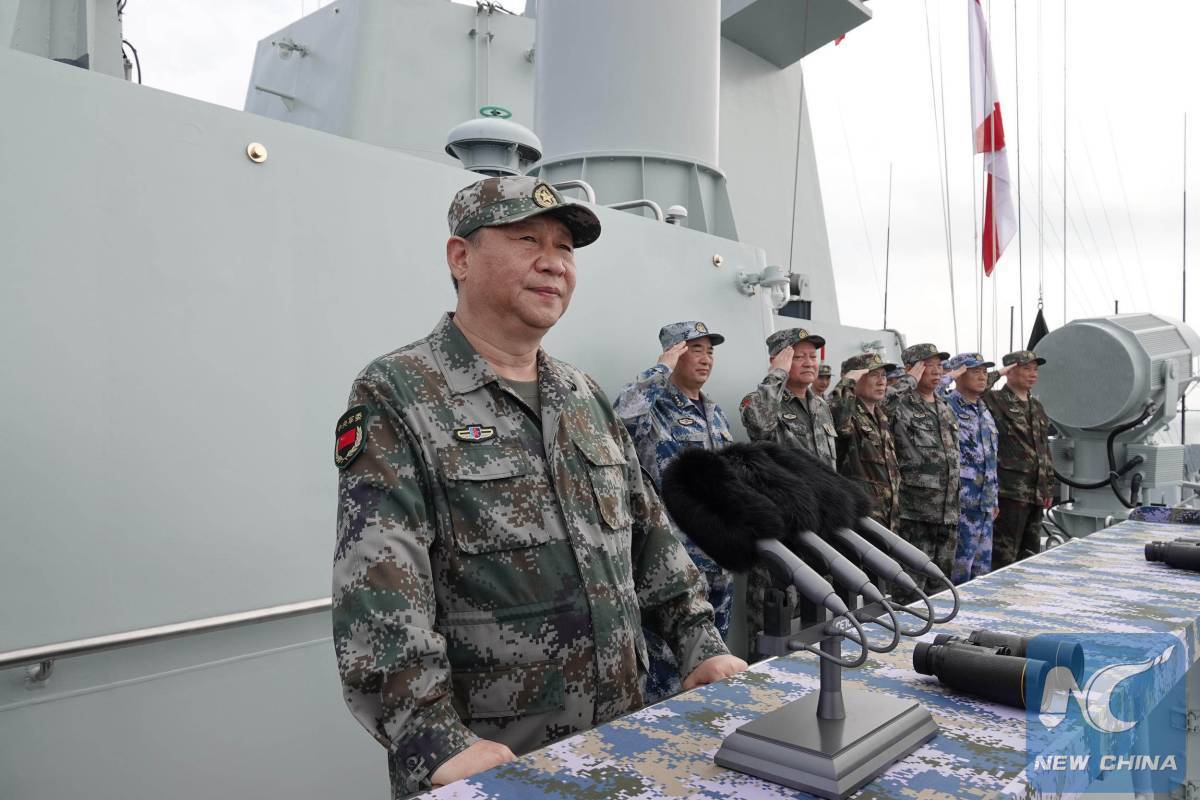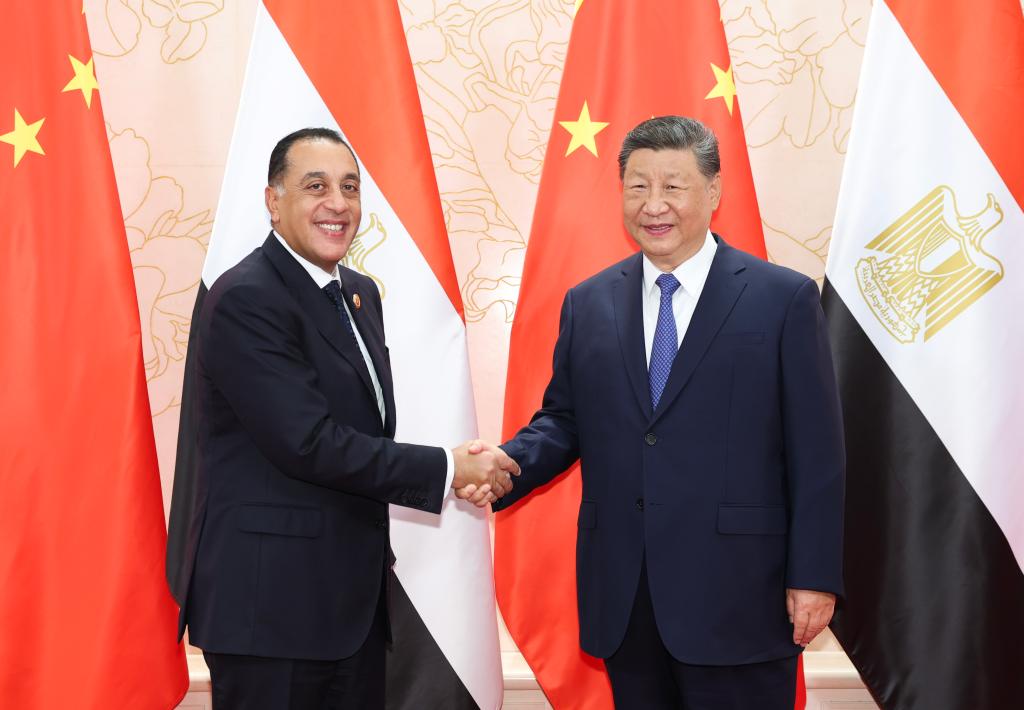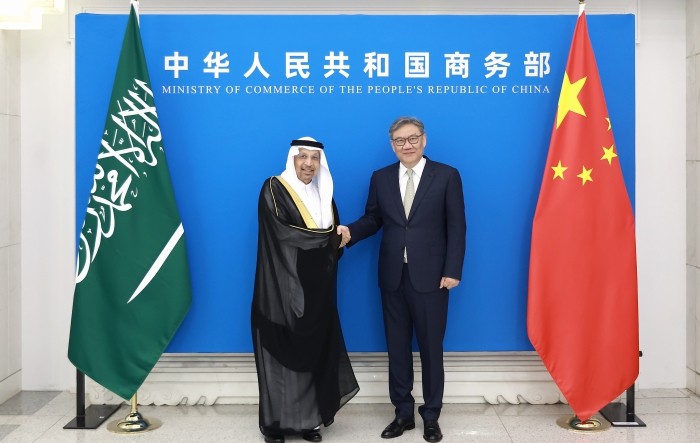China has still not been able to develop capable defence hardware and still struggles with poor-quality materials and massive costs of maintenance….reports Asian Lite News
China’s president and People’s Liberation Army head Xi Jinping is going all out to increase the military’s might and the country has not spared any effort to gain access to defence technologies from across the world by any means, Policy Research Group reported.
China has built its military strength on stolen and copied technologies from various countries, not only the United States and other European countries. It has not even hesitated to copy technologies from Russia, according to news agency ANI.
It is using both direct and indirect tools for expanding its military might. It has also invested huge sums of money in countries that don’t have the potential to pay the loans that they owe to China.
It has not even refrained from using means like cyber theft or using Chinese nationals to grab secrets of military warfare from other countries.
China uses dynamic random access memory, anti-submarine and aviation technologies to gather critical military secrets from the US, The Policy Research Group (POREG) reported citing a Pentagon report.
Another pattern of Chinese nationals getting arrested for sharing military secrets has been observed for the last six years and is still ongoing.
According to the Policy Research Group (POREG), on October 24 this year, four Chinese nationals were arrested for illegally sharing US military secrets with China. Three of these nationals were found to be officers of the Chinese Ministry of State Security.
In 2021, six academicians were arrested when they were not able to explain their link to a Chinese research institute. One of these arrested people was Gang Chen a known Massachusetts Institute of Technology. However, he was cleared of all the previous charges later on.
PLA officials posing as regular grad students were arrested by the FBI in 2020. Out of these Xin Wang during the interrogation accepted to be a PLA official and was employed as a major by a military lab in China.
One more Chinese PLA official was arrested as he had enrolled himself in Indiana University’s Luddy School of Informatics, Computing and Engineering studying AI.
As a result of all these suspicious activities, a Chinese consulate was forced to close in Houston of the Southern United States. All of these PLA officials had been sent to a foreign land to learn modern technologies and enable themselves for advanced warfare.
Another, PLA official enacting as a businessman was arrested in 2016 as he had spied on US plans for F-35, C-17 Globemaster and the F-22. He also had conspired with two more officials that hacked into Boeing and other aviation companies for stealing military secrets.
It is alleged that the Chinese J-20 is similar to F-22 and J-31 resembles the F-35 American aircraft. However, China has declined any such claims. according to The Policy Research Group (POREG)
A cyber attack was also traced on Rostec Corporation to steal airborne satellite communications, radar and electronic warfare. This cyber attack can prove fatal as Rostec Corporation is one of the largest defence establishments in Russia.
China is clandestinely sourcing retired Western military pilots from countries like the United Kingdom, Germany, Italy, Spain, and New Zealand to train PLA’s defence forces. These pilots are trained in operating all the latest defence and warfare technologies.
However, China has still not been able to develop capable defence hardware and still struggles with poor-quality materials and massive costs of maintenance. Adding to all this the J-20 Chinese aircraft was recently showcased in Zhuhai Air Show as a stealth military jet. However, Justin Bronk, a London-based Royal United Service Institute analyst has said that he is not impressed, according to Policy Research Group (POREG).
China has not only limited itself to merely gathering military secrets, it is also expanding its establishments across countries that cannot pay its huge investments disguised as infrastructural development loans.

Submarine capability
Submarines, often termed “silent killers”, are secretive but vital assets for any self-respecting navy. It is certainly the case for the People’s Liberation Army Navy (PLAN) of China, which has been prioritizing modernization of its underwater fleet.
Recent revelations – including a senior US Navy official declaring that new submarine-launched ballistic missiles (SLBM) have been fielded, plus indications of construction of a new type of nuclear-powered submarine, and new submarine infrastructure on Hainan Island – all reinforce this assessment of the PLAN’s submarine fleet.
Admiral Sam Paparo, head of the US Pacific Fleet, told reporters at a conference in Washington DC last week that the PLAN’s six Jin-class submarines are now “equipped with JL-3 intercontinental ballistic missiles”.
Reported by news outlets such as Bloomberg, this revelation came from nowhere, for there has been no chatter from open-source analysts that this might be the case. Indeed, this is the first official confirmation from the USA that the JL-3 missile has been operationalized. Moreover, it was expected that the new SLBM would only appear with the advent of future Type 096 nuclear-powered ballistic missile submarines (SSBN).
These current aforementioned Jin-class vessels, also known as Type 094 SSBNs, have hitherto been armed with JL-2 SLBMs. However, the JL-3 brings new capabilities such as greater range, such that these half dozen submarines could launch nuclear warheads at the USA from much farther away.
It is extremely unlikely that sufficient JL-3s have been produced to outfit every Type 094, though. Paparo added that the JL-3s “were built to threaten the United States”, but he added, “We keep close track of those submarines.”
The incumbent JL-2 has an estimated range of 7,200km, meaning that Chinese Type 094s would need to sail to the north or east of Hawaii to bring the USA’s east coast within range of missiles. However, Paparo refused to say whether Chinese SSBNs have conducted deterrence patrols deep in the Pacific Ocean or near Hawaii. The JL-3 has an estimated range of more than 10,000km.
In March 2022, Admiral Charles Richard, head of the US Strategic Command, told the Senate Armed Services Committee that the JL-3 would permit China to target the US mainland “from a protected bastion within the South China Sea”.
This came on top of the Pentagon’s comments last year: “As the PRC fields newer, more capable and longer-ranged SLBMs such as the JL-3, the PLAN will gain the ability to target the continental United States from littoral waters, and thus may consider bastion operations to enhance the survivability of its sea-based deterrent. The South China Sea and Bohai Gulf are probably the PRC’s preferred options for employing this concept.”
Given a range of 10,000km, a JL-3 fired from the South China Sea would not have the legs to reach the continental USA. It could do so from the Bohai Sea, however, which is closer to the Korean Peninsula and Japan. However, given Richard’s comments, this night indicate that the USA actually estimates the JL-3’s range to significantly surpass 10,000km.
The US Air Force National Air and Space Intelligence Center stated in its Ballistic and Cruise Missile Threat report that, “In late November 2018, China tested a new JL-3 in the Bohai Sea.” China has not officially admitted that the JL-3 even exists, but this is unsurprising given the paranoia that surrounds China’s military. The JL-3 will also have multiple warheads to multiply its deterrence value and increase the odds of warheads making it past defenses in any nuclear strike.

Richard also pointed out: “They’re now capable of continuous at-sea determined patrols with their Jin-class submarines,” and that “more are coming. They have a true nuclear command and control system.” There is further evidence that China’s construction of new types of nuclear-powered submarines is already well underway.
In February 2021, satellite imagery showed what may have been a first hull section of a new nuclear-powered attack submarine (SSN) or an SSBN. Specifically, it was a tail section seen at a relatively new site near the Bohai shipyard in Huludao where all nuclear-powered submarines are constructed. The hull section was some 30-32m long, and had a diameter in the vicinity of 11-12m.
While the hull section might be a version of the Type 093 Shang class optimized for YJ- 18 cruise missiles fired from vertical launchers, it could well be for a Type 095 (a new Chinese SSN comparable to the US Navy’s Virginia class) or, even more likely, for a Type 096 SSBN.
Yet more evidence has emerged from more recent satellite imagery. Photos taken in October 2022 showed sections of submarine pressure hulls at the same shipyard. What is significant is that these sections had a sizably greater diameter than those of current Shang- and Jin-class boats. The latter are generally around 9-10m in diameter, but the new under-construction hull sections are about 12m in diameter.
If all the above speculation is correct, the presence of the hull sections are confirmatory signs of construction of the new Type 096 SSBN. These long-awaited new submarines will be larger, quieter and more capable. The pressure hull needs to be larger in order to provide space to insulate the steel hull from machinery vibrations. The Type 093 is noisy and, although the 093A is better, it is still not on par with an American Los Angeles-class boat. The greater diameter of hull sections is evidence that the PLAN’s new boats will be quieter than ever before.
Expect new Chinese boats to have anechoic coatings on their hulls to improve stealth too. A bigger boat also enables a larger crew, and this could enable longer underwater patrols. Expansion at the Bohai yard since 2014 allows greater production rates, with a new construction hall and dry dock established on reclaimed land. The hall, finished in 2017, contains three construction bays with sufficient space to build two submarines.
A launch barge has been supplied too, which transfers completed hulls from the hall to the water. In other words, China now has all the infrastructure in place to build Type 095s and/or 096s. China will need to replace three Type 091 Han-class SSNs dating from the 1980s, since these first-generation submarines are approaching the end of their natural lives. Otherwise, the PLAN relies on the Type 093 Shang class that entered service in 2006.
Interestingly, the USA also refers what it calls Type 093B SSNs arriving by the mid-2020s. The Pentagon predicted: “This new Shang-class variant will enhance the PLAN’s anti-surface warfare capability and could provide a clandestine land-attack option if equipped with land attack cruise missiles.” There is development in terms of infrastructure for Chinese nuclear submarines too. Yulin Naval Base on the southern tip of Hainan Island, touching the South China Sea, is home to China’s nuclear-submarine fleet.
Satellite imagery from late July shows that two new submarine piers are being built there, on top of four already in existence. One pier that is 175m long and around 20m wide is to the north, and the other in the south is about 238m long. They both connect to newly reclaimed land at the base. Construction and reclamation has taken place sometime since February 2022.
In the same satellite imagery, three Type 094 submarines were berthed there, as well as one Type 093 SSN. This Yulin facility also has a cavern tunneled inside the adjacent mountain to protect and hide activity related to strategic submarines.
At the same base, China has constructed another large pier capable of accommodating the Shandong aircraft carrier. A massive new dry dock able to fit a carrier is also under construction there. In its most recent report on developments in the PLA, the Pentagon in the USA acknowledged that “the PLAN has placed a high priority on modernizing its submarine force, but its force structure continues to grow modestly as it works to mature its force, integrate new technologies and expand its shipyards”.
As of last year, the PLAN possessed six SSBNs, six SSNs and 46 diesel-powered attack submarines. The US predicts: “The PLAN will likely maintain between 65 and 70 submarines through the 2020s, replacing older units with more capable units on a near one-to-one basis.” The Office of Naval Intelligence (ONI) in the USA gave a slightly different figure, expecting China’s submarine fleet to grow from around 66 boats today to 76 by 2030.
Describing the Jin-class, the USA said these “represent the PRC’s first credible sea-based nuclear deterrent”. Each Type 094 SSBN can carry up to 12 JL-2 SLBMs. It also stated: “The PRC’s next-generation Type 096 SSBN, which likely began construction in the early 2020s, will reportedly carry a new type of SLBM. The PLAN is expected to operate the Type 094 and Type 096 SSBNs concurrently and could have up to eight SSBNs by 2030. This would align with Chairman Xi Jinping’s 2018 directive for the SSBN force to achieve ‘stronger growth’.”
It is already known that China is snowballing its inventory of nuclear warheads. This is most dramatically seen in land-based weapons, with massive silo fields for DF-41 intercontinental ballistic missiles being constructed deep inside China. The Pentagon estimates that the PLA will have up to 700 deliverable nuclear warheads by 2027, and 1,000 just three years after that.
The US Department of Defense commented, “The PRC is investing in, and expanding, the number of its land-, sea- and air-based nuclear delivery platforms and constructing the infrastructure necessary to support this major expansion of its nuclear forces.” It is not just nuclear submarines receiving attention either. By 2025, the PLAN will likely have 25+ Yuan-class conventional submarines, a type that has been undergoing continual spiral development.
For example, the PLAN commissioned a new Yuan-class variant in July, allocating it to Daxie Dao Submarine Base of the East Sea Fleet, which faces Taiwan. The new design is perhaps called the Type 039C or D. It is distinguished by a faceted sail featuring a chine along its length, and quite likely the design helps reduce the submarine’s cross-section when it is running on the surface.
This boat had been built in Wuhan and was fitted out in Shanghai. It took less than a year to be commissioned, which is remarkably fast for a new design. As well as carrying torpedoes and YJ-18 anti-ship missiles, it possesses a towed-array sonar mounted at the rear. Undoubtedly, the submarine has an air-independent propulsion (AIP) system that permits the boat to stay submerged for longer periods.
China is also using deception to hide the identity of its SSBNs too, by giving the same pennant number to different hulls, for example, or not disclosing a number whatsoever. In photos, the PLAN might also photoshop details to hide identifying features.
As can be seen, the status of China’s submarine force remains something of an enigma. However, there is no doubting that Chinese underwater boats are becoming more capable, and that new designs and relevant weapons are being developed and manufactured.
Defence institution needs reform
In order to transform, the People’s Liberation Army into a “world-class military”, China need to improve the system and layout of science, technology, and industries related to national defence, The Hong Kong Post reported.
China’s Defence science and technology (S and T) institutions form the backbone of China’s military might and are the most important source for its defence technology, despite the fact that their technology R and D system also comprises government research units, universities, and business research departments.
Earlier, on October 16, in the 20th National Congress of the Chinese Communist Party (CCP), the Chinese leader stressed improving the Defence S and T institutes.
While addressing the Congress, Xi said, “We will improve the system and layout of science, technology, and industries related to national defence and step up capacity building in these areas.”
After this, on October 25, State Administration for Science, Technology, and Industry for National Defense (SASTIND) held a cadres conference, where its director, Zhang Kejian, reiterated Xi’s comments regarding Chinese defence technology and demanded that his subordinates carry out Xi’s crucial instructions, according to Hong Kong Post.
Defence technology reform is still a top goal for the CCP, and China will continue to advance this to transform the PLA into a “world-class military.”
Despite the fact that these institutions are essential to China, issues have always persisted. For Beijing to increase its capability for defence technology development, these problems must be resolved through a true system reform.
China’s defence S and T institutes have experienced inefficiencies and a dearth of incentives for innovation, much like their parent businesses. They have been classified as “public institutions” in accordance with the communist system, which means that the Chinese government has authority over their assets, finances, and workforce. The institution also doesn’t have efficient bureaucratic procedures and at the same time, there is also low profitability, which discourages innovation.
Many industrial divisions of defence businesses that produce goods for the civilian market have been listed on the stock market since the 1980s economic reform era started, but defence Sand T institutes that house sensitive technology have remained public organisations reported Hong Kong Post.
In particular, the government appropriates the funding and salaries of institutes, and the results of their research cannot be commercially exploited without official approval. It follows that neither the institute nor the individual researchers have the flexibility required for innovation.
The research arm of China’s major defence corporations on weapons and equipment is these institutes, which own the fundamental military technology and work with associated scientists. Rather than their parent corporations or institutions, they are the primary force behind the development of China’s defence technology. (ANI)














